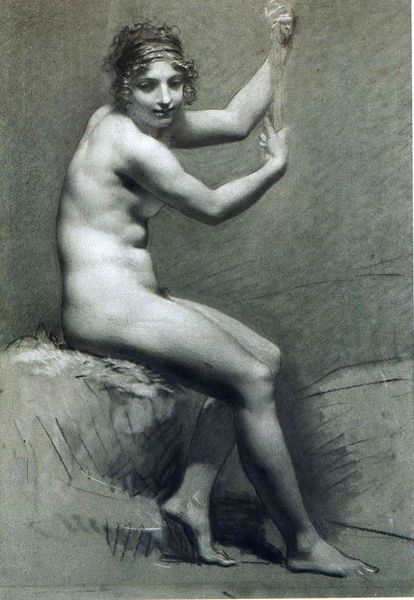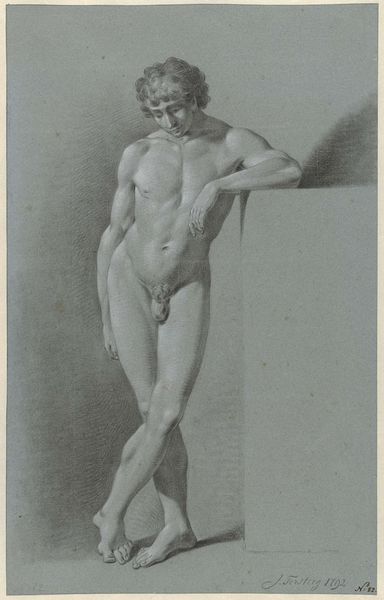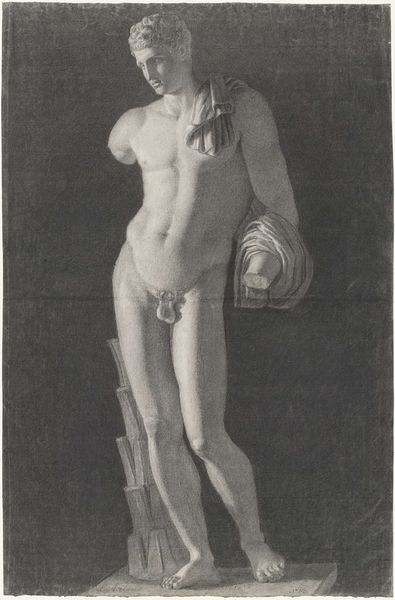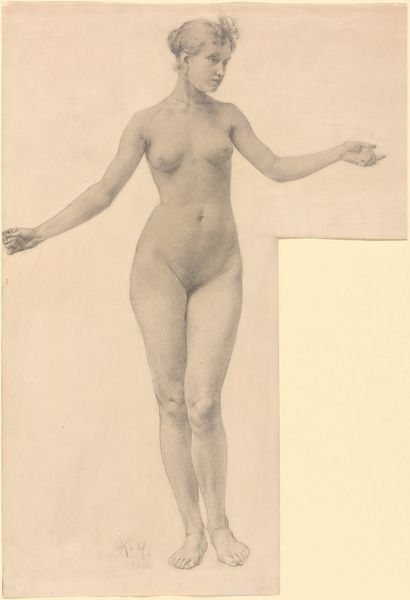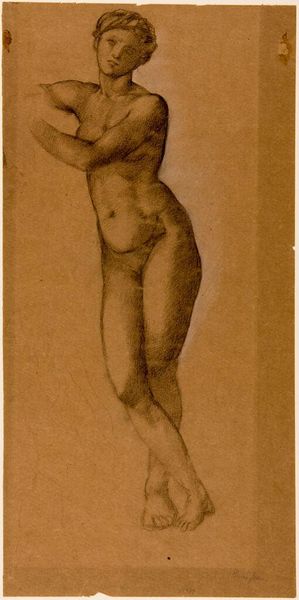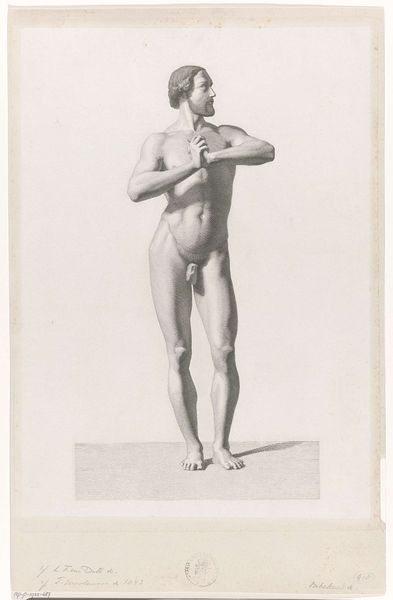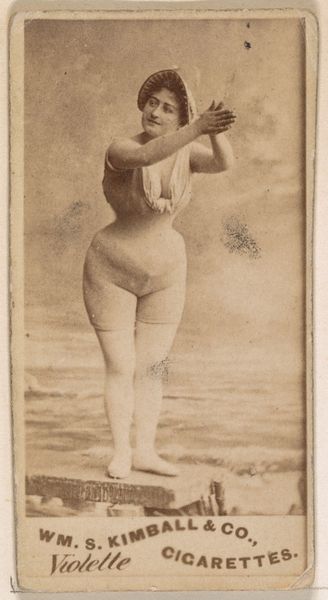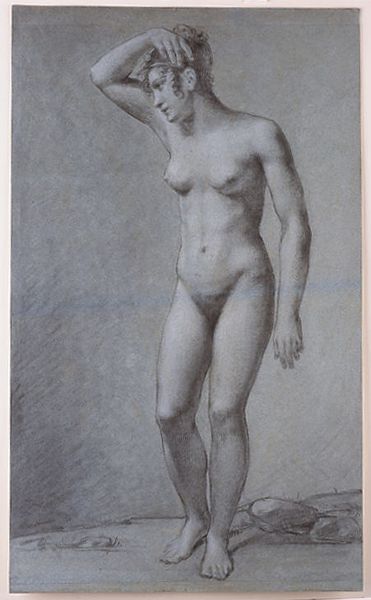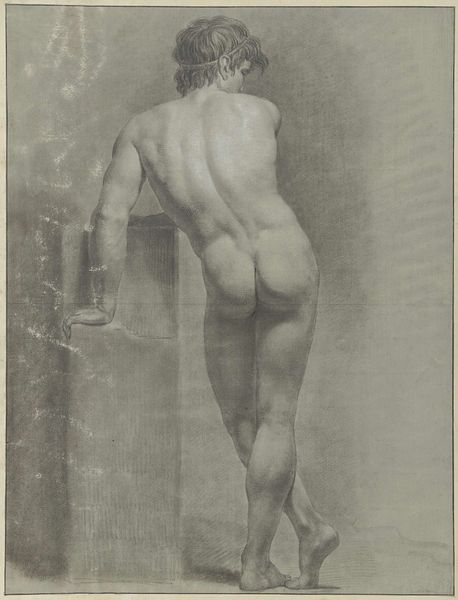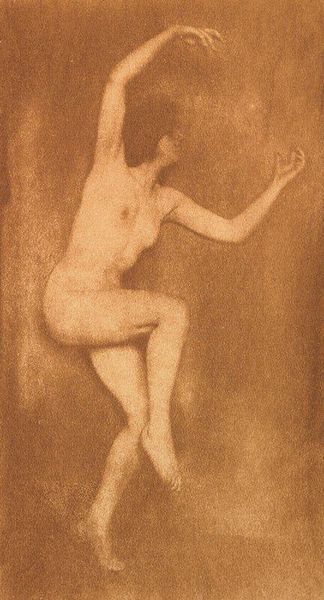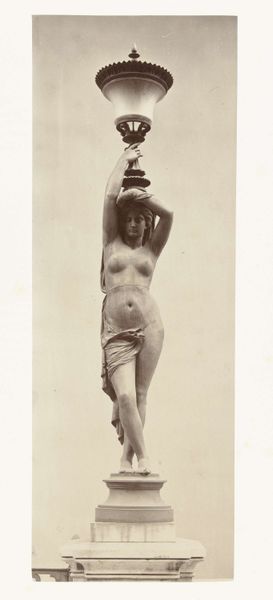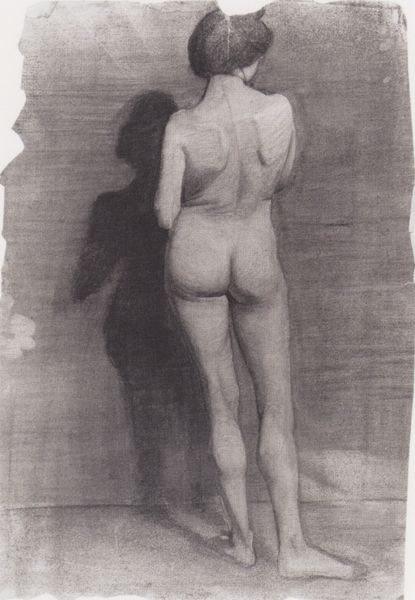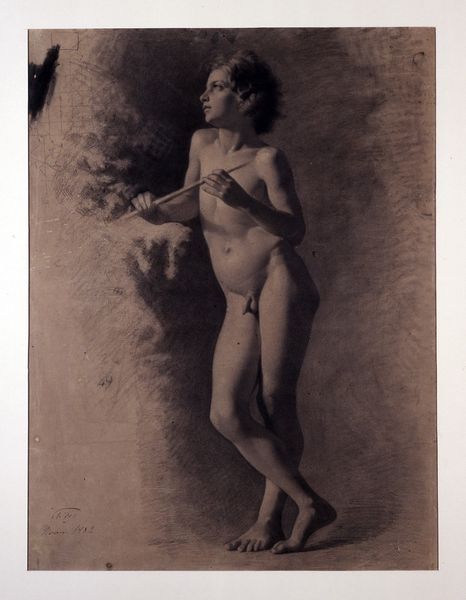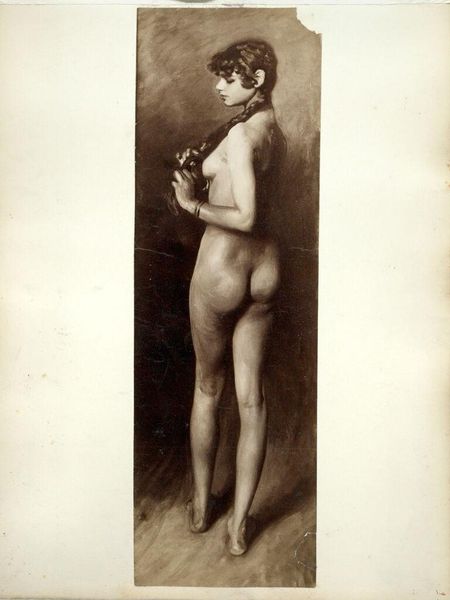
drawing, pencil
#
portrait
#
pencil drawn
#
drawing
#
light pencil work
#
pencil sketch
#
charcoal drawing
#
figuration
#
portrait reference
#
pencil drawing
#
pencil
#
portrait drawing
#
nude
Dimensions: 8 1/2 x 4 1/2 in. (21.59 x 11.43 cm) (image)
Copyright: No Copyright - United States
Curator: Here we have William B. Dyer’s “L’Allegro,” a 20th-century pencil drawing from the collection of the Minneapolis Institute of Art. Editor: My initial response is one of starkness. The monochromatic palette against the figure's nudity evokes a sense of vulnerability and perhaps isolation, depending on how we want to understand the two orbs she is holding. Curator: That's a compelling reading. The drawing itself relies on very delicate pencil work. We see the artist's process almost directly; he makes very clear material choices to render the human form, from the hatching to define shadow, to the smoothness defining planes of the body. Considering the labor of its making brings a different view of the nude beyond a history of objectification. Editor: Agreed. It's hard to divorce this from its art historical context, especially given the title's nod to Milton, but looking at this today I think we are right to look at representations of gender, especially as the circles potentially become shields or portals... are they protection or windows onto something? Curator: Well, thinking about shields, the figure is actively holding, even lifting these implements. We aren’t viewing the figure passively, we are viewing agency being enacted using rudimentary but chosen materials. It seems an intentional move away from simply consuming a female form, and looking at tools in the hand. Editor: And thinking further, what does it mean to represent an allegory now? Given that art-historical allegories of women—representations of abstract ideas—often sideline female experiences in their fullness, the tools she’s carrying can allow for that reinterpretation, even refusal of traditional roles. Curator: This really brings home how viewing materiality alongside a sensitivity to context creates a much richer understanding, not only of the image in front of us, but a sensitivity of the artist’s own relationship to it. Editor: Exactly. Hopefully viewers take away a new sense of the dialogues that an artwork like this sparks regarding identity and making.
Comments
No comments
Be the first to comment and join the conversation on the ultimate creative platform.
